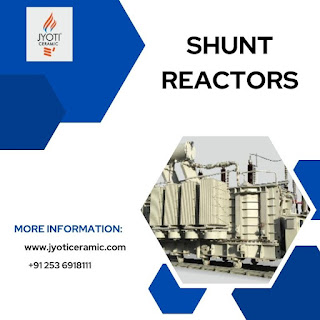In the ever-evolving landscape of power systems, the quest for efficiency and reliability is paramount. One crucial element contributing to the optimization of electrical grids is the shunt reactor. the intricacies of shunt reactors, exploring their functionality, significance, and the pivotal role they play in ensuring a stable and efficient power distribution system.
Understanding Shunt Reactors:
At the core of power system stability lies the shunt reactor—a device designed to control voltage levels and manage reactive power in electrical networks. Unlike transformers that transfer electrical energy from one circuit to another, Shunt reactors are connected in parallel to the power system to absorb and release reactive power. Reactive power, vital for maintaining voltage levels, can lead to inefficiencies and instability if not appropriately managed. Shunt reactors act as a vital component in regulating this power, ensuring optimal grid performance.
Functionality of Shunt Reactors:
Shunt reactors operate by absorbing excess reactive power during periods of low load and releasing it during high-load conditions. This dynamic response helps to maintain voltage levels within an acceptable range, preventing voltage instability that could lead to system failures. By providing a controlled path for reactive power flow, shunt reactors enhance the overall efficiency of the power grid.
Significance in Power Systems:
Shunt reactors play a crucial role in improving the power factor of electrical grids. Power factor is a measure of how effectively electrical power is being converted into useful work output. A higher power factor indicates a more efficient utilization of electrical power. Shunt reactors, by managing reactive power flow, contribute to achieving and maintaining a desirable power factor, thereby optimizing the efficiency of the entire power distribution system.
Voltage Control and Stability:
Voltage control is one of the primary functions of shunt reactors. Fluctuations in voltage levels can have detrimental effects on connected equipment and appliances. Shunt reactors help maintain a steady voltage profile by absorbing excess reactive power during low-demand periods and releasing it during high-demand periods. This capability ensures voltage stability, reducing the risk of voltage sags and surges that could lead to equipment damage and system failures.
Benefits of Shunt Reactors:
Improved Power Quality:
Shunt reactors enhance power quality by controlling reactive power flow, reducing voltage fluctuations, and minimizing harmonic distortions. This leads to a more reliable and stable power supply, benefiting both utilities and end-users.
Increased Energy Efficiency:
By optimizing the power factor and voltage levels, shunt reactors contribute to increased energy efficiency in the power grid. This results in reduced energy losses during transmission and distribution, ultimately lowering operational costs.
Extended Equipment Lifespan:
The controlled management of reactive power by shunt reactors helps prevent stress on electrical equipment. This, in turn, extends the lifespan of transformers, switchgear, and other critical components in the power system.
Enhanced Grid Capacity:
Shunt reactors enable power utilities to maximize the capacity of existing infrastructure, delaying the need for costly upgrades. This is particularly valuable in regions experiencing rapid urbanization and increased power demand.
Applications of Shunt Reactors:
Transmission Systems:
Shunt reactors are commonly used in high-voltage transmission systems to compensate for the capacitive nature of long overhead lines. This application helps maintain voltage stability and ensures efficient power transfer over extended distances.
Distribution Networks:
In distribution networks, shunt reactors are deployed to improve voltage regulation, especially in areas with varying load profiles. This ensures that electricity is delivered consistently to end-users without compromising on quality.
Renewable Energy Integration:
The intermittent nature of renewable energy sources, such as wind and solar, can lead to fluctuations in power generation. Shunt reactors play a vital role in stabilizing voltage levels and maintaining grid integrity when integrating renewable energy into existing power systems.
Industrial Applications:
Industries with fluctuating power demands benefit from the voltage stabilization provided by shunt reactors. This is crucial for preventing disruptions in manufacturing processes and ensuring the reliable operation of industrial equipment.
Conclusion:
In the dynamic landscape of modern power systems, shunt reactors emerge as indispensable assets for ensuring stability, efficiency, and reliability. Their ability to control reactive power flow, regulate voltage levels, and improve power quality makes them essential components in both transmission and distribution networks. As the energy sector continues to evolve, the role of shunt reactors is expected to grow, contributing to a sustainable and resilient power infrastructure for generations to come.
Visit:https://www.jyoticeramic.com/Steatitecerami.php
Contact: +91 253 6918111
Source link-
https://writeupcafe.com/optimizing-power-systems-unveiling-the-crucial-role-of-shunt-reactors/

Comments
Post a Comment